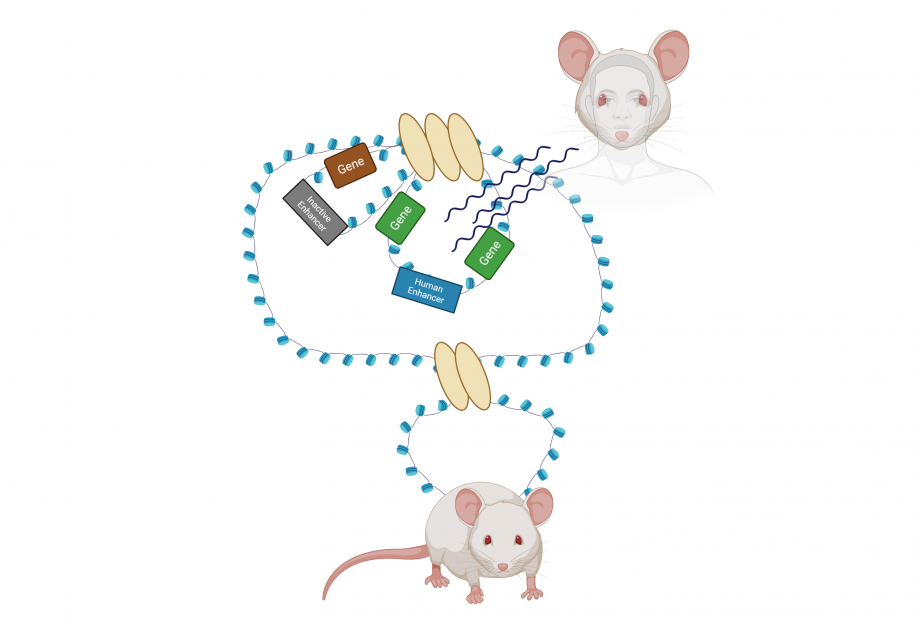A Symphony of Speciation
The regulation of gene expression by transcription enhancers is critical for cellular identity and the observable difference between species. A recent epigenetics study has found that by introducing human or chimp specific enhancers into distinct genetic domains, scientists could drive species specific facial morphology in mouse embryos.
During the development of an organism, such as a human or chimpanzee, time and synchrony is of the essence. The formation of new organs, the expansion of tissues, the first heartbeat; every step from the zygote to the adult follows a paced symphony of DNA transcription.
Surprisingly, the instruments at the heart of this harmony, our genes, are about 97% to 99% similar between humans and chimps. The dissonance between our two species can be explained by the substantial 16% difference between genomic maestros: transcription enhancers.
Enhancers influence the timing and intensity of gene expression, similar to how a conductor commands its orchestra. However, the tens of thousands of genes coded within our DNA are more laborious to coordinate than a relatively simple musical ensemble. To ease the work of thousands of its genetic maestros, our genome is organized into genetic domains. Each domain encompasses a few genes and enhancers that are free to conduct the melody as loudly as required, all the while without influencing the genes and enhancers in other domains.
As the embryos develop, these domains are organized differently between cell types. For example, a maestro that vigorously responds to muscle cellular signals is grouped with the orchestra of muscle specific genes in the cells of our biceps. However, such energetic conductors are kept away from the brain specific genes in this tissue. Therefore, our bicep cells will be muscle cells as the “Ballad of Myogenesis” will loudly play over the “Chant of the Neurons”.
Similar to cell-to-cell differences, can enhancer activity also dictate species specific divergence? In other words, could an interspecies switcheroo of enhancers alter the melody of development enough to turn a human into a chimp? For obvious ethical reasons, we will never fully answer these questions. But recently, scientists partially did.
Early embryos of humans, chimps and mice are phenotypically very similar. Therefore, mouse embryos were used as a model to study the effect on facial morphology of enhancers. They genetically modified these embryos to introduce a human or a chimp specific enhancer in a genetic domain of mouse genes that regulate facial morphology. This, not-so-simple manipulation was enough for the altered mouse embryos to develop human-specific or chimp-specific facial characteristics. This experiment directly shows the massive evolutionary importance of enhancers, which were long kept in the shadows of genes themselves.
In conclusion, the next time you listen to Vivaldi’s Four Seasons or Wagner’s Ride of the Valkyries, if you are amazed by the quality of the symphony and the quality of the timbre, be more so by the well-orchestrated gene expression that resulted in the coordinated evolution of human musicians themselves.

